Unique Nikah Traditions From Around the World

Nikah ceremonies vary widely across cultures, reflecting the beauty and diversity of Islamic traditions. While the core Islamic principles of marriage remain consistent, each community adds its unique flavor, blending Islamic practices with cultural customs. Here are some of the most unique and fascinating Nikah traditions from around the world:
1. South Asia (India, Pakistan, Bangladesh): The Quranic Blessing
Tradition: During the Nikah, the bride often sits behind a veil or screen, while verses from the Quran are recited. In many families, a Quran is held over the bride’s head as she is escorted to the groom’s home, symbolizing blessings and protection.
The Sehra Bandi: The bride and groom may exchange garlands (Sehra Bandi) as a gesture of love and acceptance.
2. Indonesia: The Betel Nut Exchange (Siraman)
Tradition: Before the Nikah, a purification ceremony called Siraman takes place, where water is poured over the couple to cleanse them spiritually.
Unique Touch: Betel nuts are exchanged during the ceremony as a symbol of prosperity and fertility.
3. Turkey: Henna Night (Kına Gecesi)
Tradition: The night before the Nikah, a Kına Gecesi (henna night) is held, where the bride’s hands are adorned with henna designs, and women gather to sing traditional songs.
Unique Touch: The groom’s family presents a red veil and a tray of gifts, symbolizing joy and blessings for the bride.
4. Morocco: Bridal Hammam and Milk Ceremony
Tradition: Before the Nikah, the bride undergoes a Hammam (traditional steam bath) to purify and prepare for her new life. At the Nikah, milk and dates are often shared to symbolize purity and sweetness.
Unique Touch: The bride wears a kaftan adorned with intricate embroidery, and the groom dons a matching djellaba.
5. Somalia: Traditional Dance Procession
Tradition: The bride and groom are accompanied by a lively procession with traditional dances and songs. Buraanbur poetry is recited, praising the couple and their families.
Unique Touch: The bride wears a traditional guntiino and is wrapped in gold jewelry.
7. Nigeria: Aso Ebi Coordination
Tradition: Guests at the Nikah often wear Aso Ebi—coordinated outfits made from the same fabric to signify unity and support for the couple.
Unique Touch: Drummers and dancers celebrate the union with vibrant performances.
8. Afghanistan: Mirror and Holy Book Ceremony
Tradition: During the Nikah, the bride and groom look into a mirror together while a Quran is held over their heads. This symbolizes spiritual blessings and mutual reflection.
Unique Touch: The couple shares sheer khurma (a sweet dessert) to signify sweetness in their new life.
9. China (Hui Muslims): Tea Ceremony
Tradition: Hui Muslims in China incorporate a tea ceremony into the Nikah, where the bride and groom serve tea to their elders as a sign of respect.
Unique Touch: The couple’s attire often blends traditional Chinese and Islamic elements, such as embroidered robes and headscarves.
10. Yemen: The Zaffa Procession
Tradition: After the Nikah, a Zaffa procession includes traditional music, drums, and songs, leading the bride and groom to their new home.
Unique Touch: Incense is burned throughout the ceremony to ward off evil spirits and bring blessings.
11. Sudan: Jirtig Ceremony
Tradition: After the Nikah, the Jirtig ritual involves the couple being blessed with incense and henna. A red silk scarf is tied around them to symbolize unity and protection.
Unique Touch: Family elders sing traditional songs to celebrate the union.



